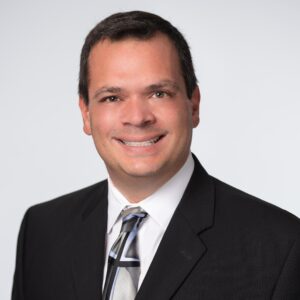The turnaround to survey excellence
Peter Ducker, one of the most renowned management minds of our generation, offers this observation:“Good intentions don’t move mountains, bulldozers do!” If your facility repeatedly receives poor surveys, it’s time to bring in the heavy management equipment and get everyone motivated to bulldoze the way to better results.
Survey excellence should be a professional goal of all healthcare workers. Passing surveys is a healthcare worker’s job. Sometimes people forget that once hired, they are there for the job, not the other way around. They must do whatever is necessary to protect the well-being of the residents and maintain the facility’s good reputation. It takes relentless planning, consistency, good follow-up and ongoing education to keep everyone at optimal job performance. In the following article, I suggest a three-step approach to encouraging complete staff involvement: the Focus Review, the Fast Track and the Survey Prime.
FOCUS REVIEW
Dissect the survey findings. Department heads must immediately be assigned to a meticulous study of the survey findings and, subsequently, identify all regulatory/policy violations cited within their compliance jurisdiction. Key staff should also be assembled into a drop-down team whose job is to ensure a future compliance review and establish corrective action.
During the first read-through of the CMS 2567 Statement of Deficiencies, pay close attention to those staff singled out in the findings. Quickly schedule face-to-face meetings with them so they can either confirm or dispute the findings. Surveyors do make mistakes when citing deficiencies and those mistakes should be noted by your facility and clearly outlined in the plan of correction (POC).
However, when staff is directly connected to a deficiency, address those matters immediately. This part of the process is not about sparing any feelings or not upsetting sensitive colleagues; it’s about a logical, professional approach to giving staff information they must have. During face-to-face meetings, educate those staff as to the proper procedures to follow regarding the regulation/policy in violation. Requirestaff to sign a training form that has a copy of the regulation/policy attached. Repeat this process for all staff singled out in the CMS 2567.
The next phase of the focus review includes departmental and global (all staff) training. Each training module should be set up to include an overview of regulations/policies violated, as well as the following four key elements:
• Corrective action.Discuss in detail how the deficiency was corrected.
• Procedure used for identifying other residents potentially affected.Deficiencies generally affect all residents. Staff should be told how the facility identified whether other residents were impacted by the cited deficiency.
• Systemic changes.Discuss how the facility implemented changes to minimize the recurrence of the cited deficiencies.
• Quality assurance (QA) monitoring.Discuss how the facility audits corrective actions to hold staff accountable for implementing the POC effectively.
The most effective way to develop a quality allied healthcare delivery model in long-term care is to bathe staff in an intensive, focused review of information regarding regulations, facility policies and procedures, and innovative LTC operations until it becomes second nature to staff. Then—and only then—will core competencies emerge and survey outcomes improve. It’ a matter of time, consistency and diligence. Inspire staff to do their best to get the best surveys possible.
FAST TRACK
Prepare for the resurvey; get the drop-down team in action. Once the POC is accepted by the Department of Public Health (DOPH), immediately execute a Fast Track in preparation for the resurvey. The Fast Track is a deconstruction of the POC and it requires the following key elements: POC analysis and planning, discovery and content edification.
The drop-down team is responsible for Fast Track’s implementation. In the analysis and planning phase the team must develop auditing tools to assess compliance as outlined in the POC under QA monitoring. Consider this example of a common deficiency in the area of privacy:
The surveyor observed that staff were not knocking or announcing themselves before entering resident rooms. The immediate corrective action was to provide refresher training to all staff relating to policies and regulations relating to privacy, resident rights and maintaining resident dignity. The QA monitoring in the POC called for weekly, unannounced 15-minute observations of the nursing units to determine if staff was following proper regulations/policies regarding resident privacy.
Assume that it took five weeks for the DOPH to accept the POC. The drop-down team member assigned to nursing would first check the prior five weeks of audits to assess compliance and make adjustments as needed. Then the drop-down team member rigorously conducts his or her own 15-minute observation as outlined in the POC. This same process is completed for each deficiency and conducted by the various drop-down team members. The findings are documented and prepared for “content edification.”
Content edification is the process of gathering information from the Fast Track and then informing staff of the results, teaching them the proper procedures. All Fast Track observations and findings are consolidated into summaries for a supplemental round of staff training. These summaries must include the negative findings, corrective actions taken and they should definitely include highlights of progress achieved. The ultimate goal of content edification is to augment prior training efforts and strengthen regulatory compliance.
SURVEY PRIME
Don’t miss your only opportunity to make a good first impression. Surveyors expect facilities to be prepared for survey. Too often, facility staff doesn’t prepare and find themselves scrambling to retrieve needed survey documents. While staff forages to find the information, the survey is delayed, surveyors get irritated and the opportunity for a good first impression is lost.
However, with Survey Prime providers can ensure a good first impression. The following information is routinely requested by surveyors at the entrance conference:
Within one hour…
● Name and room number of resident council president
● Key personnel list
● Copy of resident rights provided to all residents
● List of meal times, copy of all menus
● Medication pass times
● List of admissions for past month
● List of transferred or discharged residents for the past three months (with destinations)
● Copies of the facility floor plan, the incident reporting process, the admission contract and the facility abuse prohibition policies and procedures with name of facility abuse program coordinator
● Names and room numbers of residents under 55
● Names and room numbers of residents who communicate with non-oral communication devices, sign language or non-dominant languages in the facility
By end of tour…
● Resident roster/matrix (CMS 802P)
● Working schedules for all nurses
Within 24 hours…
● Completed LTC Facility Application for Medicare and Medicaid (CMS 671)
● Completed resident census and condition of residents (CMS 672)
● List of all requests for demand bills 24 hours
● Name of staff responsible for facility’s immunization program
● List of residents in facility during most recent influenza season (F-334)
● Copy of facility disaster preparedness policy and procedures
● List of employees hired since previous survey
● List of current employees with hire date
● Staff development training records for mandated reporting of abuse since last survey
Copies of this information should already be in a binder ready to be handed to the survey team upon its arrival.Designate staff to review and update the binder weekly, throughout the year. The director of nursing should maintain an updated version of the Resident Roster/Matrix (CMS 802P) from the time of the annual survey until the resurvey. Preselect tour guides for the initial tour and guarantee that they are familiar with the residents as well as knowledgeable about facility operations.
Designate a cordial staff member to work one-on-one with the team leader throughout the survey to answer questions and provide follow-up. Most important, ensure the survey team has a comfortable room to work in with plenty of data ports/electrical outlets for its computers. The ultimate goal of Survey Prime is to demonstrate your preparedness, professionalism, organizational expertise and ability to make the survey team feel welcome. Work hard at doing just that.
CONCLUSION
The reality about a turnaround process incorporating Focus Review, Fast Track and Survey Prime is that it is effective in any regulatory environment: long-term care, acute care, custodial care, mental healthcare, rehabilitative healthcare, veteran healthcare services and prison healthcare environments. And with every turnaround, you have to implement change powerfully, with the tools of a management bulldozer: Focus Review is the blade that cuts open the problems, Fast Track is the ripper used to unearth the cause of the problem and Survey Prime is the plow needed to remove the obstacles and clear the path to better survey outcomes.
Jaime Todd, MBA, LNHA, is a healthcare operations turnaround specialist with extensive experience in long-term care. He is currently implementing a comprehensive turnaround plan as a Chief Support Executive for California Correctional Health Care Services. For more information, call (949) 306-7421 or email jtandarlene@verizon.net.
I Advance Senior Care is the industry-leading source for practical, in-depth, business-building, and resident care information for owners, executives, administrators, and directors of nursing at assisted living communities, skilled nursing facilities, post-acute facilities, and continuing care retirement communities. The I Advance Senior Care editorial team and industry experts provide market analysis, strategic direction, policy commentary, clinical best-practices, business management, and technology breakthroughs.
I Advance Senior Care is part of the Institute for the Advancement of Senior Care and published by Plain-English Health Care.
Related Articles
Topics: Articles , Regulatory Compliance , Staffing











